Charles Vexenat, Absinthe guru, world renowned bartender and mixologist, and owner of Bar 1805 in Ibiza hosted a Pernod Absinthe masterclass at Pelicano in Double Bay with Pernod Brand Ambassador, Ben Taouss.
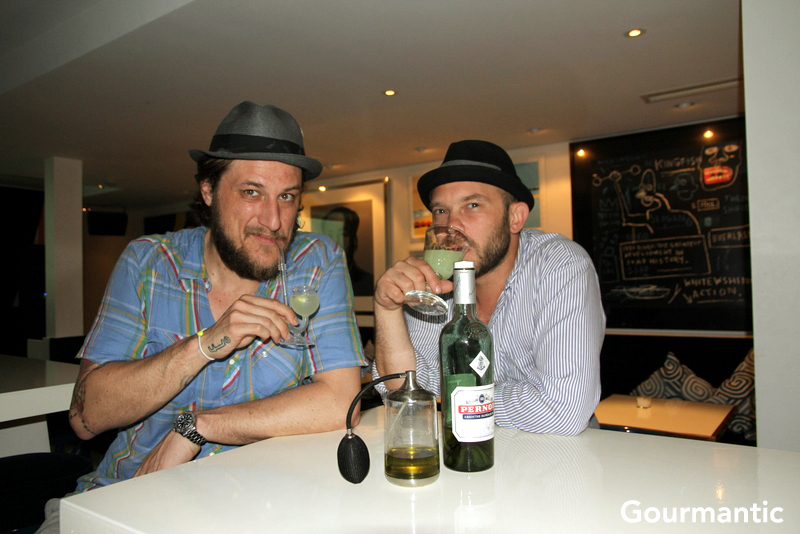
L-R: Charles Vexenat, Ben Taouss, Ricard Brand Ambassador and Assembly Bar Owner
What is absinthe?
Absinthe is a spirit, not a liqueur (ie it no added sugar) which contains anise and wormwood among other botanicals. Absinthe production is very similar to gin in that both need botanicals and follow a maceration process.
Wormwood comes from Artemesia which is found in many species such as sage and tarragon. The plant grows in high altitudes from 50 cm to 1.5 metres tall. Only the leaves are used to make absinthe. Absinthe needs two types of wormwood, Artemisia Absinthium and Artemisia Pontica, the latter is also used to make vermouth. Thujone is the active ingredient and “what tickles your brain when you drink”.
Absinthe was traditionally used in small quantities as medicine. The plant was soaked in wine and given to women in childbirth and those who suffered from painful periods.
Early History of Absinthe
The history of absinthe dates back to c 1790 and the time of the French Revolution. Pierre Ordinaire, a French doctor, moved to the Swiss town of Couvet where he took some eau de vie, distilled absinthe and created a potion that was palatable. When he died, he passed the recipe to the Henriot sisters who later sold it to Major Dubied. He asked his son in law, Henri-Louis Pernod to help him make it in 1797. In 1802, he started his own distillery and in 1805 he opened a distillery in Pontarlier, in France. He was a kind employer who offered his employees sick pay, a pension and a small percentage of the company, which to this day, employees of Pernod Ricard still enjoy.
How Absinthe is Made
Absinthe is made using a three step process. The first is the distillation of the various plants, followed by a hydro distillation then a maceration process which gives it a natural green colour. Absinthe is bottled at 68% vs 45% for Ricard Pastis. The higher proof is necessary to retain the green colour.
The Ban of Absinthe
When the phylloxera bug spread and destroyed grapes which affected the wine, cognac, Armagnac production, absinthe consumption increased and became the preferred drink of the bourgeoisie. However, in 1901 lightning bolt struck the distillery and a lot of absinthe was lost down the Doux river, which took four years to rebuild.
The Green Prohibition followed which was in essence was a propaganda spread after Monsieur Lanfray shot his entire family after consuming inordinate amounts of wine, brandy and absinthe then shoting his wife, his children and himself. The blame was placed on absinthe and in 1910 it was banned in Switzerland, followed by 1912 in America and 1915 in France. Which led to the birth of Pastis.
The Return of Absinthe
In the 1990s, absinthe came back on the market in Europe under a different form. In the Czech Republic, Hilo inherited a vodka distillery from his father and created a form of absinth (without the “e”). Czech absinth is made using different methods and recipes. The spirit does not louche, ie it does not turn cloudy when water is added. Absinth is low in anise flavour due to the use of star anise.
Production of absinthe returned in France where they cut down the levels of thujone and they called it spiritueux à base de plantes d’absinthe. And on 17 May 2011, the law was changed to allow it to be called absinthe.
Different grades of absinthe are now produced, with Pernod Absinthe termed as absinthe superieure.
Absinthe Paraphernalia
The ritual of absinthe involves several paraphernalia, and here, Charles Vexenat demonstrates the use of the absinthe fountain.
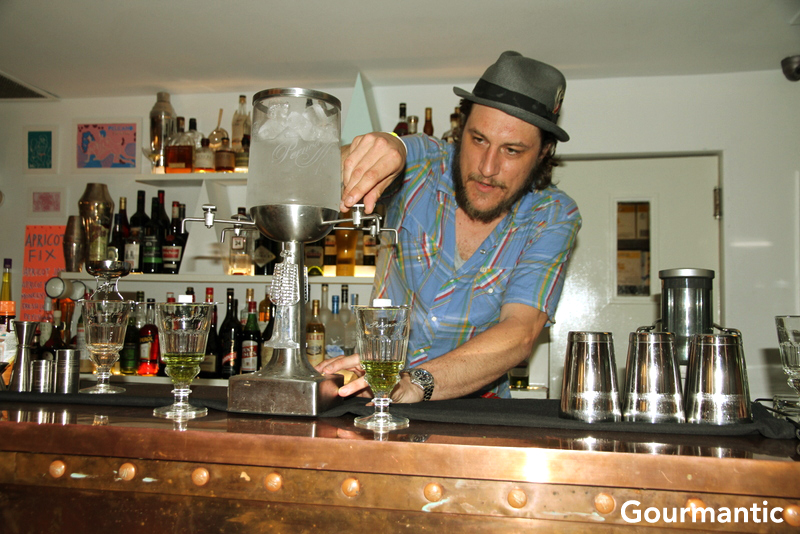
Absinthe Fountain
An absinthe fountain should only have water and ice. Pour one shot into an absinthe glass, rest the absinthe spoon on top, add a sugar cube then allow the cold water to drip slowly. Sugar and spirit need water to blend and dissolve as much as possible.
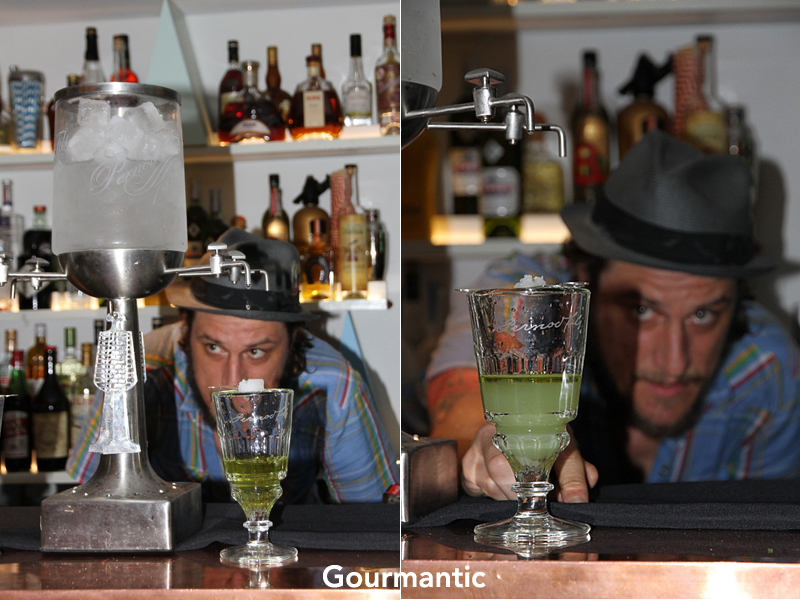
The louche effect
With good quality absinthe, “louching” takes place starting from the bottom of the glass working its way upwards. The louche effect comes from essential oils that make up the spirit. The result is a layered and sophisticated drink versus one that is one dimensional in flavour.
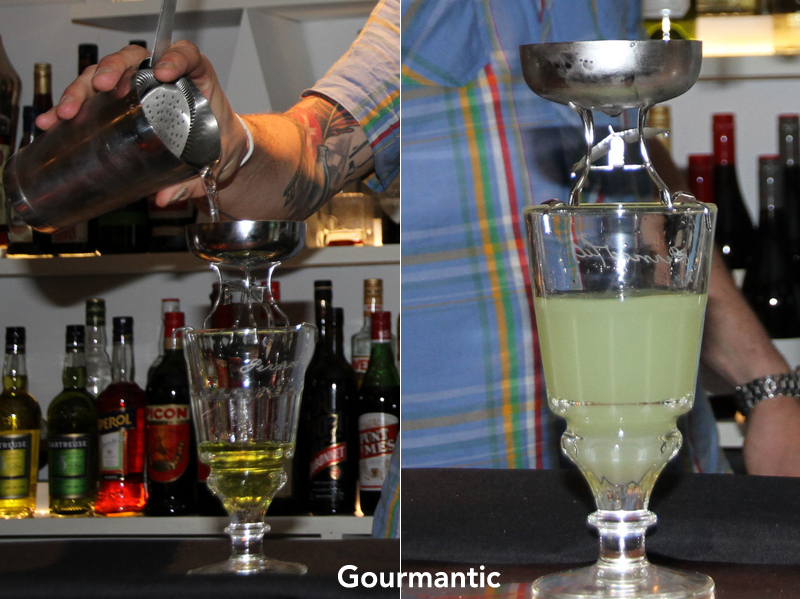
Balancier or brouilleur
Another useful tool is the balancier or brouilleur which sits on top of a glass which has one shot of absinthe. Add water to the brouilleur and it drips sideways, creating the same effect as the fountain and louches from the bottom.
Pernod Absinthe Cocktails
Created by Charles Vexenat, the following Pernod Absinthe cocktails are simple to prepare and demonstrate the versatility of the spirit.
The Green Beast
Ingredients
1 part Pernod Absinthe
1 part fresh lime juice
1 part sugar syrup
4 parts water
Method:
Build all ingredients in a punch bowl over ice and serve as a punch or in absinthe glasses.
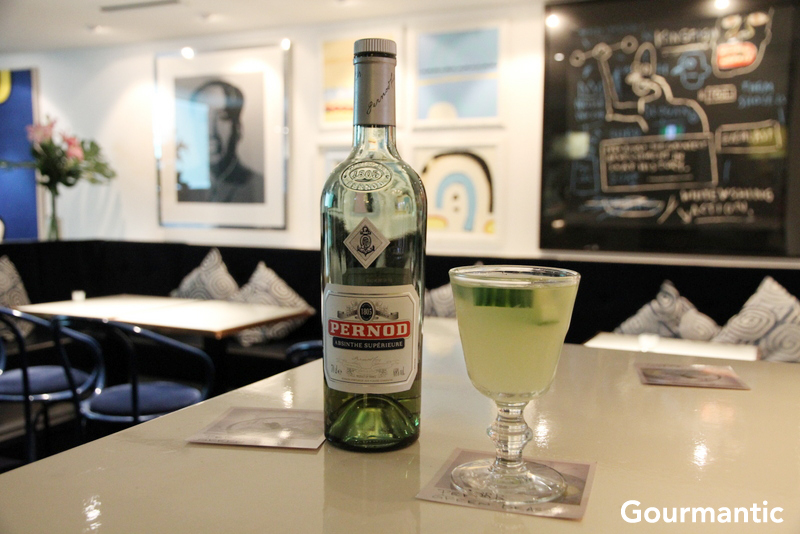
Green Beast Cocktail
Absinthe Grape Sour
Ingredients:
6-8 seedless grapes per drink
1 part Pernod Absinthe
1 part fresh lemon juice
1 part egg white
A dash of orange bitters
Method:
Muddle 6-8 white seedless grapes per drink.
Add other ingredients. Shake with ice and double strain.
Garnish with fine aniseed on top.
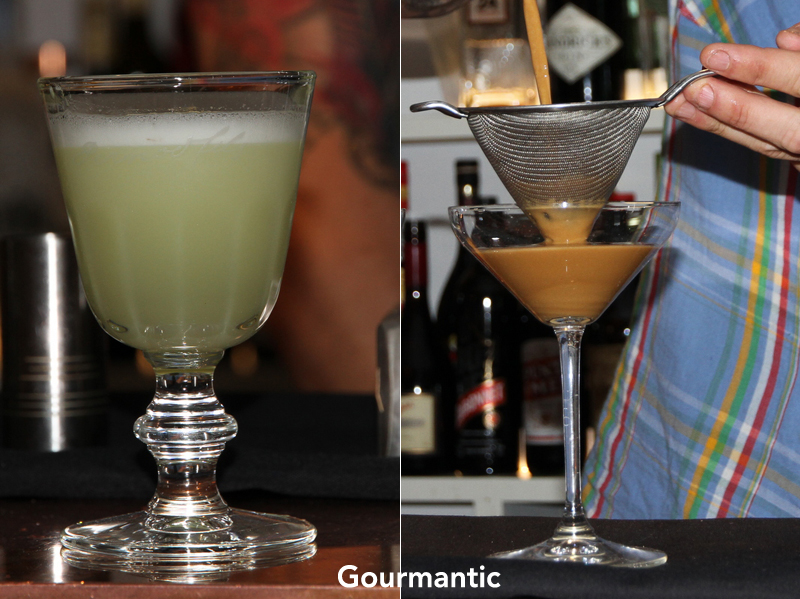
L-R: Absinthe Grape Sour, Absinthe Coffee Flip
Absinthe Coffee Flip
Ingredients:
1 part espresso coffee
1 part Pernod Absinthe
1 part sugar syrup
1 part milk
Method:
Add ingredients in above order.
Add ice. Shake. Double strain. and sprinkle with grated nutmeg.
The cocktail has a marked liquorice flavour from the combination of absinthe and coffee, although it contains none.
The Pernod Absinthe Masterclass with Charles Vexenat was held on Tuesday 20 March 2013 at Pelicano in Double Bay.

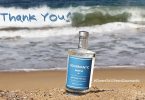
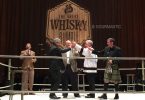

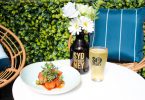

[…] Wings is the Cocktail of the Month, made with gin and cucumber, a dash of honey and a little absinthe. The drink is served in a Martini glass with two slices of cucumber like the wings of a […]
[…] Ricard was a sensory delight with the Pernod Green Beast punch, made with Pernod Absinthe, sugar syrup, lime juice, water and slices of […]
[…] pomegranate and lime with a dot of absinthe make up the Pan American Clipper ($18), a classic cocktail adapted from Charles H. Baker, Jigger […]
[…] of the green fairy spirit. French, Swiss and American absinthe feature on the list such as Pernod Absinthe, Vieux Pontarlier and Absinthe Pacifique that are worth the experience on subsequent visits. A […]
[…] Promise sounds intriguing, a drink made with fresh pineapple and coriander, vodka shaken with absinthe, something to leave for next […]
[…] ($18) made with a blend of Bombay gin, Cointreau, Lillet Blanc, fresh lemon juice and a dash of Absinthe which comes served in a chilled silver coupe glass. Although pleasant to drink with an end note of […]
[…] (Singapore) Chris Moore (London) Tim Philips (Sydney) Carina Tsou (Paris) Hidetsugu Ueno (Tokyo) Charles Vexenat […]
[…] your hand at making the Pernod Absinthe Green Beast. The drink was created for Pernod Absinthe by Charles Vexenat in 2010and works well as a punch. You need 1 part Pernod Absinthe, 1 part fresh lime juice, 1 part […]